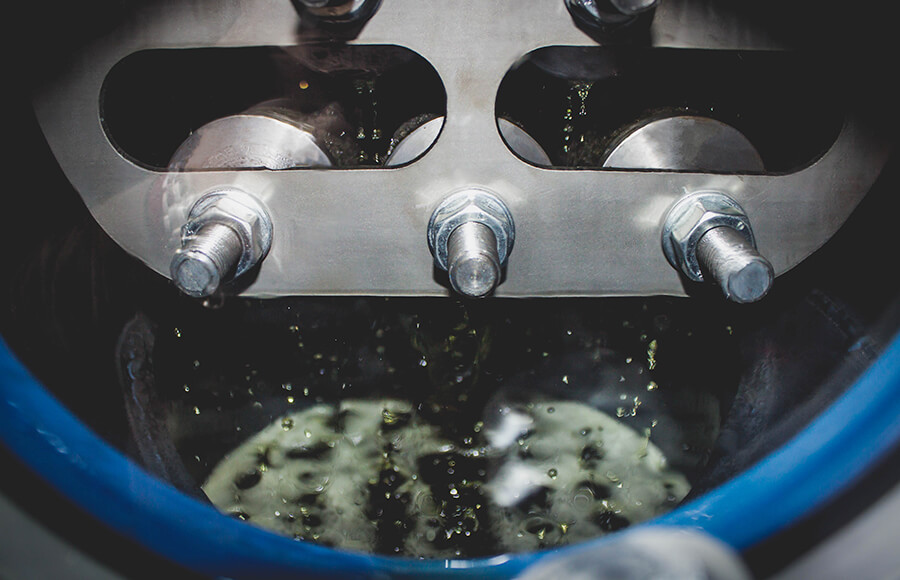Oil Recovery
To date, oil recovery occupies an important place in the environmental policy of every country. Petroleum products contaminated with various impurities (metal particles, water, dirt, oxidation products, etc.) significantly deteriorate and must be collected and recovered.
Oil recovery is re-use of oil, both for its original and other purposes. Below is the analysis of the most common ways of used oil recovery.
Oil Recovery Method
On-site Oil recovery
One of the most common ways of used oil recovery is collection on-site and delivery to oil refineries. Usually oil refineries have all the necessary equipment for processing large volumes of oils: industrial, transformer, turbine, motor, etc. The oil products obtained are used as raw material for production of fresh commercial petroleum products.
Oil Burning Method
Another way of recovering used oil is burning it as fuel. The major difficulty here is a necessary pre-treatment of used oil: with removal of harmful impurities and water. Since water prevents normal combustion, and the remaining impurities pollute the atmosphere. Used oil should be cleaned from harmful substances released as a result of combustion that should not break the rules and standards.
The disadvantage of this method is only one-time use of waste oil.
Oil Regeneration
Perhaps, the most preferable way of oil recovery is regenereation. It restores the properties of waste oil to standard values, and makes it possible to re-use oil as intended or produce fresh oils and fuels. Commonly produced trough range of technologies that include different kinds of filters. With correct regeneration, the service life of oil can be extended for a long time.
Oil Recovery Systems
First of all there can be a number of specific problems that you need to look after and solve:
- Water content
- Solid contaminant
For elimination of water from the oil you need to proceed dehydration. Some recovery systems allow removal of both free and dissolved water. With this matter deals well CMM-1.2T – special unit for turbine oil filtration.
This item can purify the turbine oil from solid particles either.
As we can see, it is very important to choose the suitable technology for each kind of oils.
There can also appear any other cases, that demand individual approach.
Efficiency of Oil Regeneration
Oil regeneration is a treatment of oil, that can restore liquid medium to new like conditions.
This method can include different combinations of technologies.
It is possible to proceed regeneration process with the oil itself or trough connection to the system.
Regeneration of oil samples is efficient when you need to operate a small amount of liquid or just testify new technology and decide further. It is also a proper way, when you don’t use the oils in your for own manufacturing but realize or distribute them.
On-site regeneration is reasonable for huge industrial area when it’s difficult to remove oil from a system. There are different kinds of equipment and methods that permit regeneration just directly inside the system.
GlobeCore Technology
CMM-R unit – is an oil restoration plant, that can work in both possible ways.
There are obviously differences in the modifications of units. The only what you need is to choose suitable system. There are machines for different types of oils.
There are transformer, turbine, hydraulic and the other sorts of fluids that you can restore with a complex and unique technologies.
Secondary Oil Recovery
The common purpose of secondary oil recovery is maintaining of reservoir pressure. This can be solved through different vacumizing or pumping equipment.
This maintenance program can be started during the primary recovery stage. It is also a form of additional recovery as a part of complex procedure.
The other ways of secondary recovery are gas injection and waterflooding
By and large, secondary procedures consist of oil reservoir maintenance, which is also important for proper oil system service.
Oil conditions surely depend from different external factors and impure transformer reservoirs can cause earlier aging or other problems.
Gas injection
Normally, gas injection is operated to supply reservoir pressure.
Gas fills up the gas cap and, in its turns, enhances all the recovering process.
Water injection
The water injection can sweep the displased oil off. It is a simple physical process, but it has its problems.
First of all it is less efficient method than any other. It can’t deal with large volume of heavy pollution. It can also cause range of problems with system that has weak water-resistance.
Improved Oil Recovery
Oil recovery technologies gained the highest level nowadays. The most exciting invention is the possibility to proceed any maintenance on-site. There are different methods that help to recover oil during operation.
Individual enterprises are interested in oil recovery on-site with oil regeneration equipment. It eliminates transportation costs for delivery of used oil to collection places, and saves money on purchase of fresh oils.
Regeneration on-site is provided by mobile CMM units by GlobeCore. The main advantage of this equipment is its versatility. It is possible to choose the unit of required capacity to recover a certain type of waste oil.
GlobeCore equipment takes into account the latest trends in the oil refining market. Modern sensors ensure safety and reliability of the process. Integrated approach (multistage filtration, thermal vacuum drying, adsorption purification) allows to achieve a complete recovery of important oil parameters.
Other advantages of GlobeCore oil recovery plants are:
- minimal oil losses during processing;
- foam control and protection against oil leaks;
- safe and easy-to-use tape heaters;
- cartridges of different filtration fineness (1, 5 or 25 microns);
- remote control of equipment via smartphone or PC.

